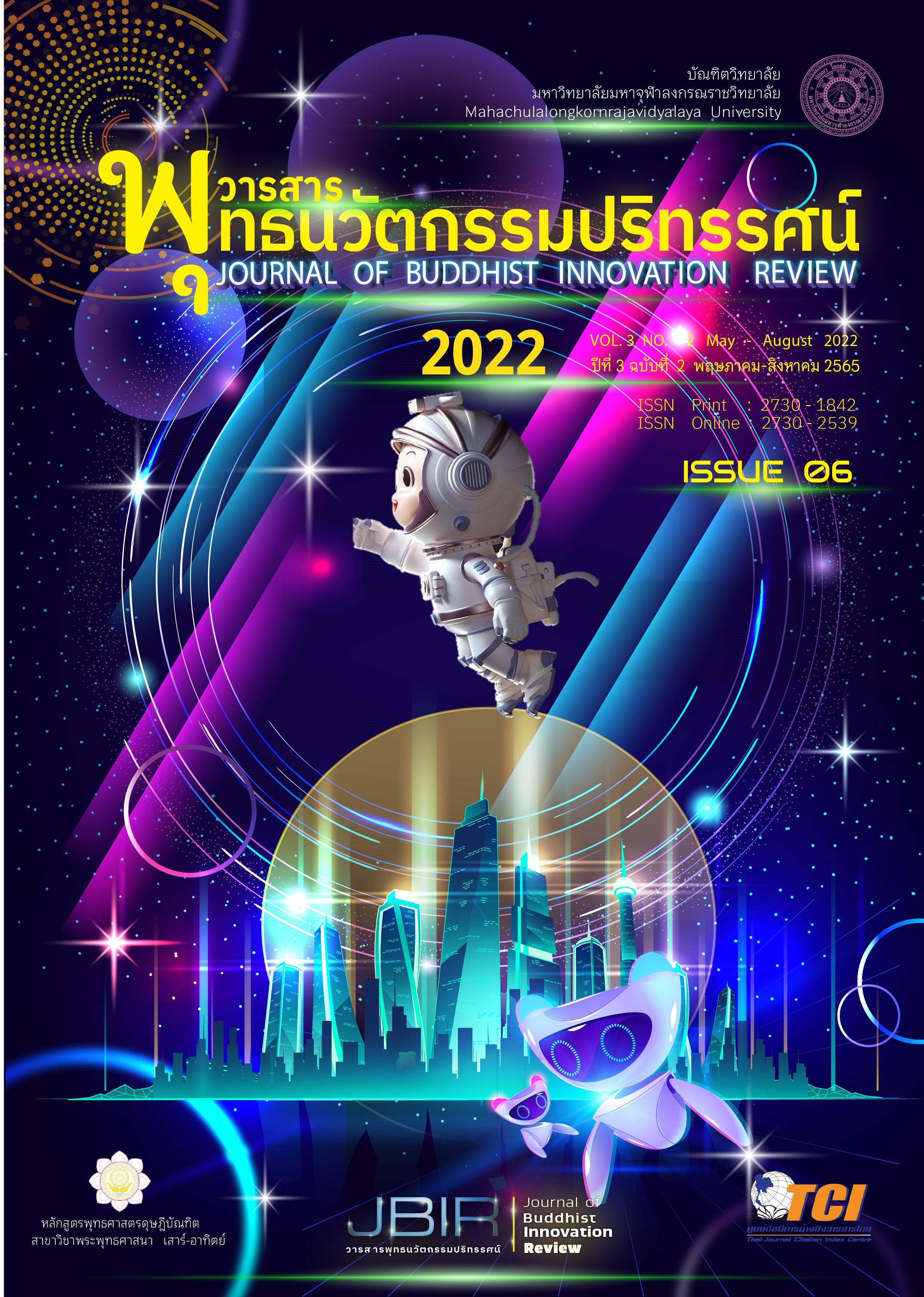Selection of persons to enter the Sangha organization according to the principles of Dharma and Discipline and the rules of the Sangha Sangha Council.
Main Article Content
Abstract
this academic article aims to present the meaning, types, and functions, importance, principles ,and methods of considering individuals into a sangha organization. From the research, it was found that the Sangha Organization is the organization of the Buddhist monks, the first company in Buddhism. Monks are an important component of religion, having both a disciplinary role and a social role. The admission of the person into the sangha must therefore be carefully considered in accordance with the Disciplinary Act and the rules of the Sangha Council as the criteria for consideration. Because in the early days the Lord Buddha gave ordination to his clans by himself, later assigned the Sangha to consider accepting people into the Sangha. The preceptor who presides over the admission of a person into the organization, checks for qualifications first and then brings them to the sangha meeting for the monks to consider and check their qualifications through every step of the process in the midst of the monks and then that person will count as a monk in Buddhism. At present, the social situation and the person who will come to be ordained have changed a lot. Considering a person to enter a Sangha organization, in addition to adhering to the rules of discipline, the requirements of the Sangha Council must be taken into consideration to obtain qualified persons to be religious heirs.
Keywords: consideration, Sangha organization, ordination, discipline, rules of the Supreme Sangha Council
Article Details

This work is licensed under a Creative Commons Attribution-NonCommercial-NoDerivatives 4.0 International License.
เรื่องลิขสิทธิ์/เป็นความคิดเห็นของผู้เขียน
References
เอกสารอ้างอิง
หนังสือ
พระธรรมวโรดม (บุญมา คุณสมฺปนฺโน). (2560). คู่มือพระอุปัชฌาย์. กรุงเทพมหานคร: บริษัท อัพทรูยู ครีแอทนิว จำกัด.
พระธรรมปิฎก. (ป. อ. ปยุตฺโต). (2546). พจนานุกรมพุทธศาสน์ ฉบับประมวลศัพท์. กรุงเทพมหานคร: บริษัทเอส.อาร์.พริ้นติ้งแมสโปรดักส์ จำกัด.
พระวิสุทธิภัทรธาดา (ประสิทธิ์ พฺรหฺมรังสี). (2547). พระราชบัญญัติคณะสงฆ์และกฎมหาเถรสมาคม.กรุงเทพมหานคร: โรงพิมพ์มหาจุฬาลงกรณราชวิทยาลัย.
คณาจารย์มหาวิทยาลัยมหาจุฬาลงกรณราชวิทยาลัย. (2550). ประวัติพระพุทธศาสนา. กรุงเทพมหานคร: โรงพิมพ์มหาจุฬาลงกรณราชวิทยาลัย.
มหาวิทยาลัยจุฬาลงกรณราชวิทยาลัย. (2539). พระไตรปิฎกภาษาไทยฉบับมหาจุฬาลงกรณราชวิทยาลัย. กรุงเทพมหานคร: โรงพิมพ์มหาจุฬาลงกรณราชวิทยาลัย.
มหามกุฏราชวิทยาลัย.ธัมมปทัฏฐกถาแปล ภาค๑,(2554). กรุงเทพมหานคร:มหามกุฏราชวิทยาลัย.
บรรพต วีรสัย. (2519). สังคมวิทยา มานุษยวิทยา. กรุงเทพมหานคร: โรงพิมพ์มหาวิทยลัยรามคำแหง.
พระศรีสิทธิวงศ์ (สาย ตุลโย ป.ธ.9). (2548). การบวชในพระพุทธศาสนา. นครปฐม: โรงพิมพ์มหามกุฏราชวิทยาลัย.
ราชบัณฑิตยสถาน. (2546). พจนานุกรมฉบับราชบัณฑิตยสถาน พ.ศ.2542. กรุงเทพมหานคร: บริษัทนานมีบุ๊คส์พีบลิเคชั่นส์ จำกัด.
พระไพศาล วิสาโล. (2546). พุทธศาสนาในอนาคต แนวโน้มและทางออกจากวิกฤติ. กรุงเทพมหานคร: มูลนิธิสดศรี-สฤษดิ์วงศ์.
สำนักเลขาธิการมหาเถรสมาคม.(2562). คู่มือพระสังฆาธิการ. กรุงเทพมหานคร:โรงพิมพ์สำนักงานพระพุทธศาสนาแห่งชาติ.


